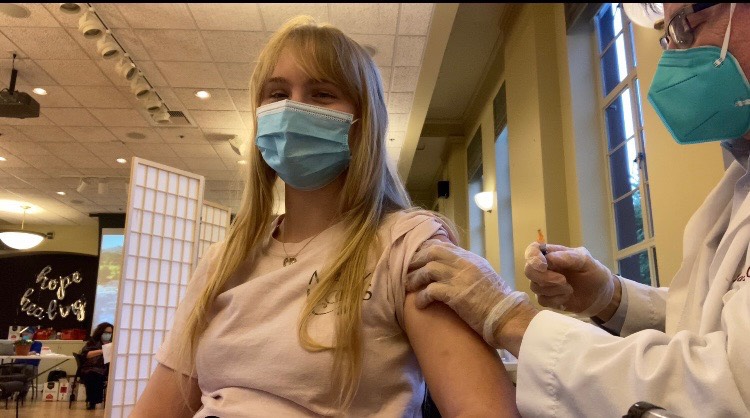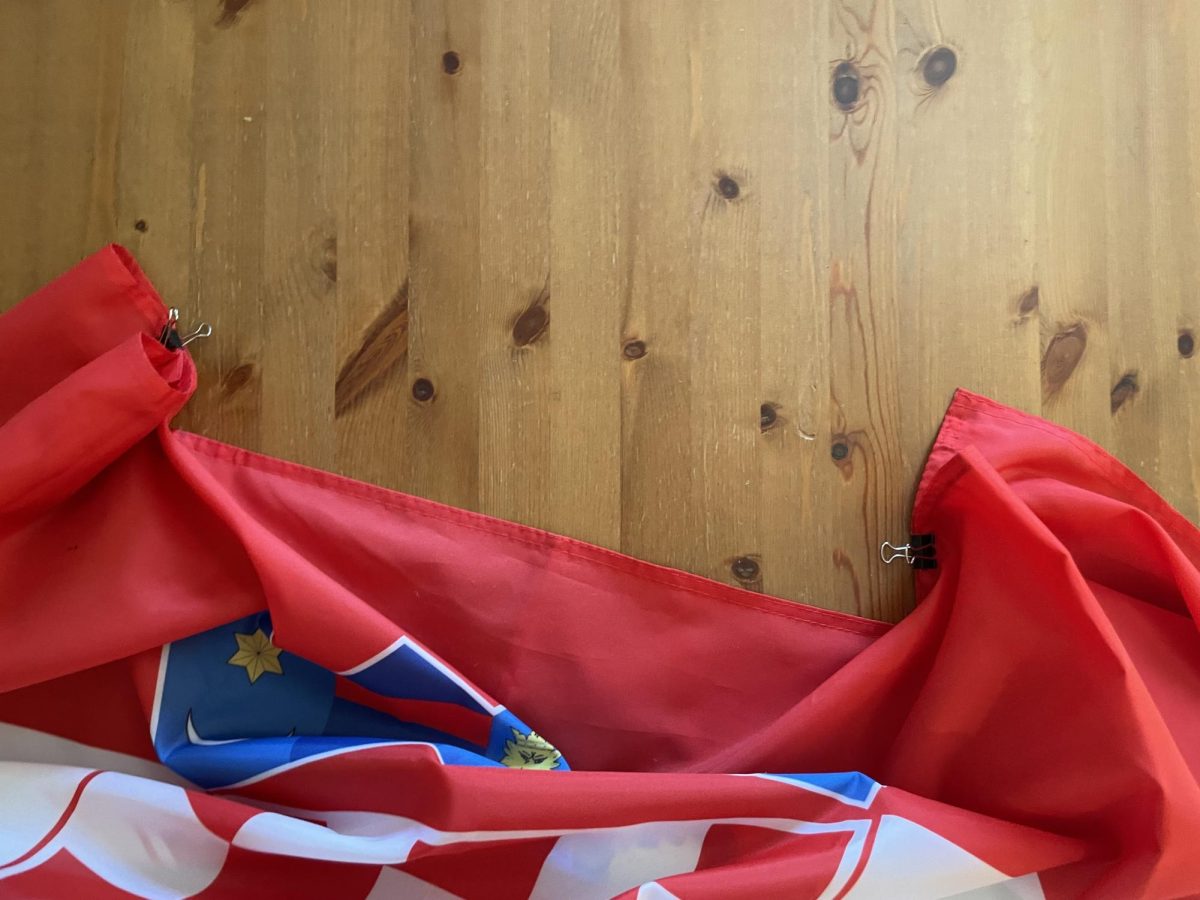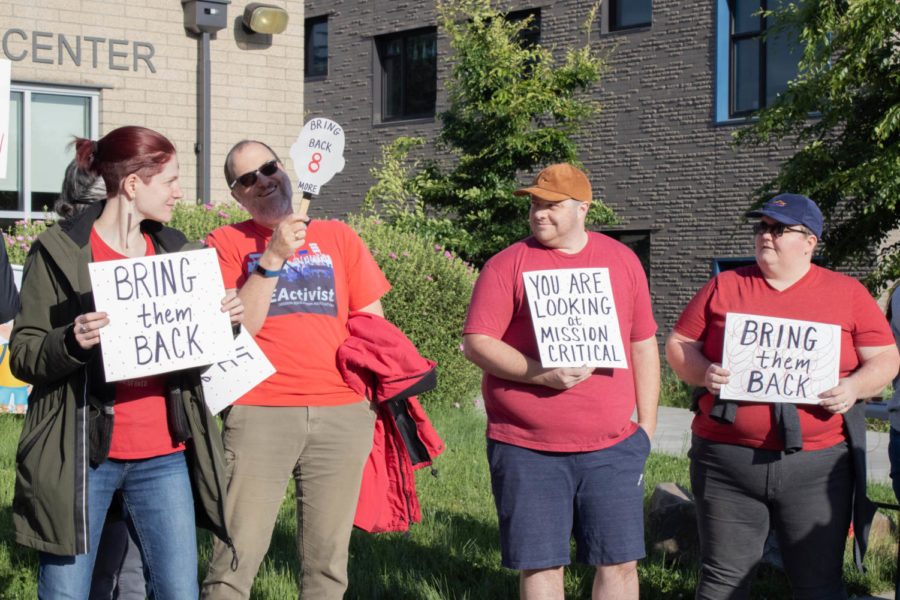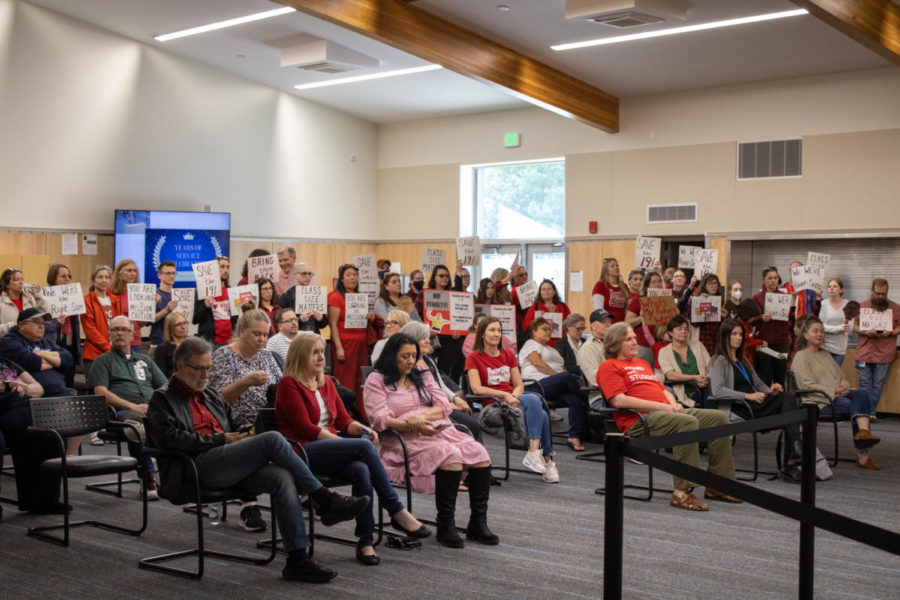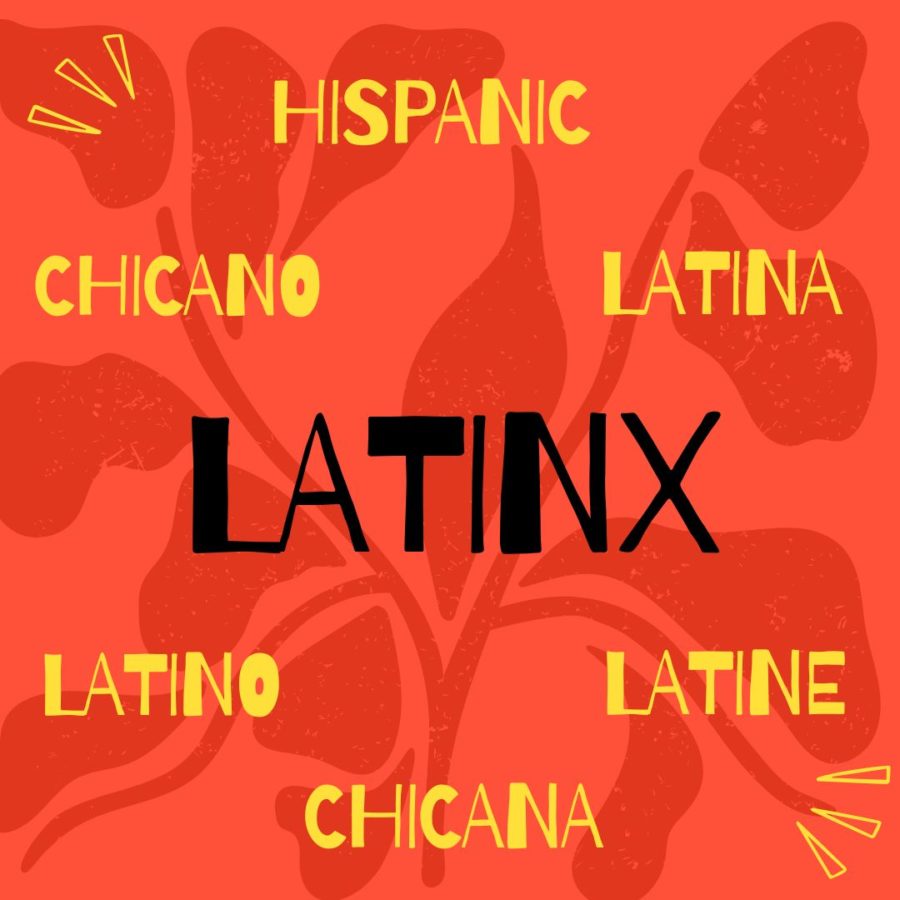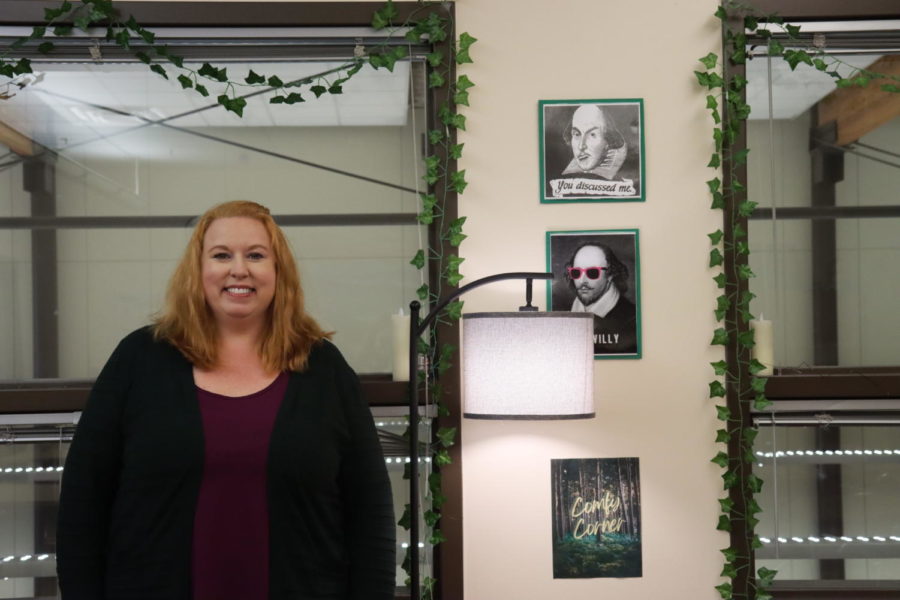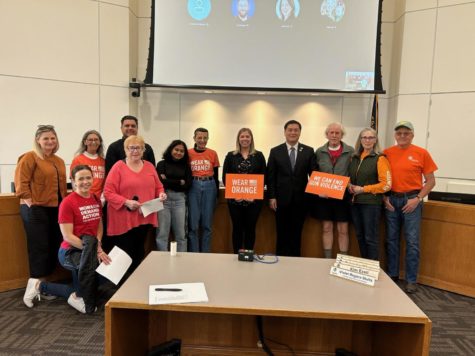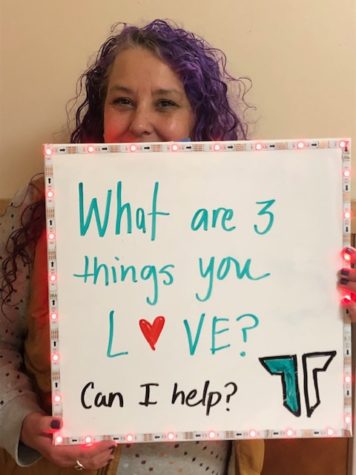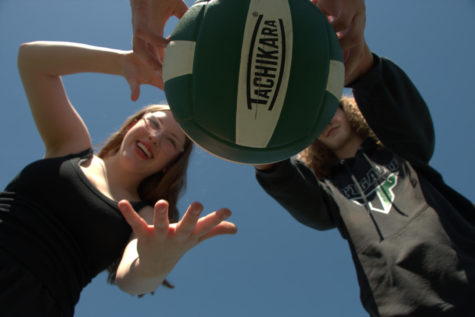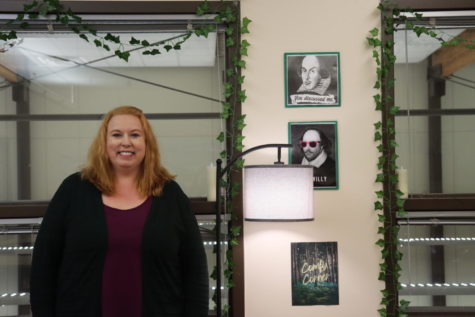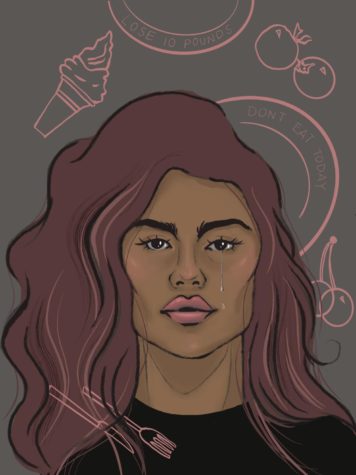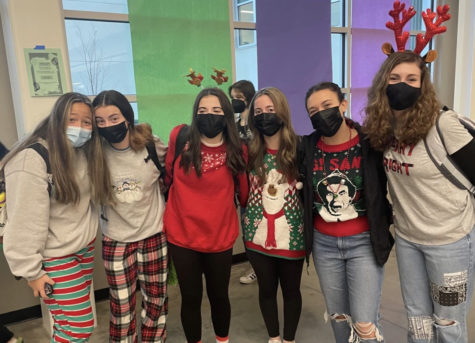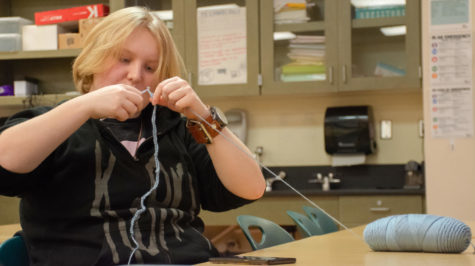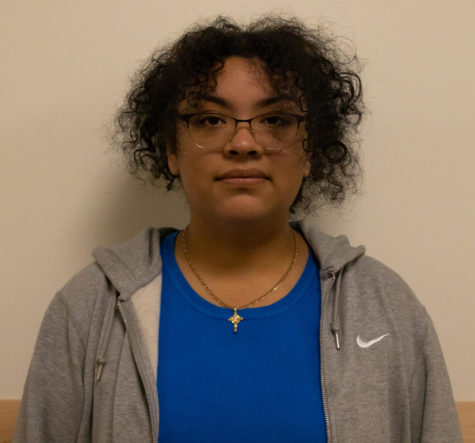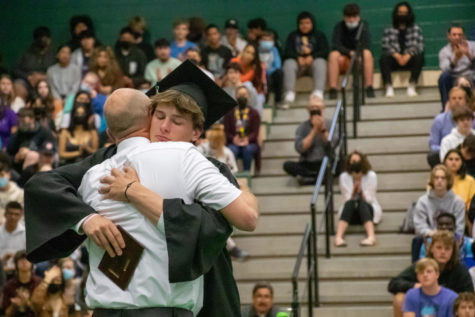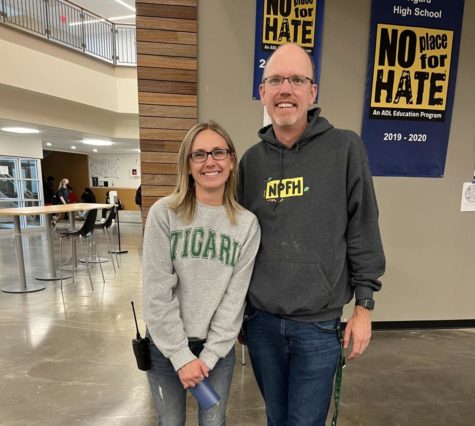Vaccinated
Students and teachers get their COVID vaccines
Senior Rietta Thomson gets her COVID vaccine. She was able to get her vaccine before it became available for everyone 16 years and older. “I got the vaccine because I work at a retirement home,” Thomson said. ” I feel it is my responsibility to protect the elderly I work for.”
April 27, 2021
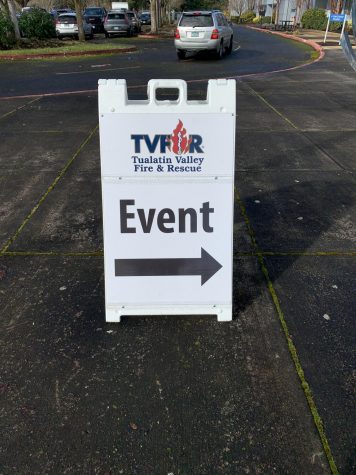
With the COVID-19 pandemic reaching extreme levels, vaccines are being distributed to the public at fast rates.
Three different kinds of vaccines have been approved, Moderna, Johnson and Johnson, and Pfizer.
The Moderna and Pfizer vaccines are very similar with both being mRNA transmitters. These vaccines require two doses 3–4 weeks apart. They also offer the same potential side effects after receiving the vaccine. The side effects include redness, swelling and pain around the arm the shot was put in. Meanwhile, throughout the rest of the body, it may experience muscle pain, chills, nausea, fever, headache and tiredness.
IB biology teacher, Kaleb Reese, helps explain the science behind the vaccine’s side effects.
“The mRNA vaccine has been developed from a genome of the virus,” Reese explained. “Scientists developed it so it could actually get into our cells, and then our cells took over, turning the mRNA into protein.”
This allows immune systems to create antibodies that will fight off COVID in the future.
“The first dose primes your immune system, getting it ready for that second dose so later it will cause your immune system to react,” he added. “So now you’ve got full immunity.”
The vaccines are being distributed in three phases. Within the first phase there are two separate groups, 1a and 1b. Group 1a, nicknamed the “jumpstart phase,” consisted of high-risk health workers and first responders. Group 1b vaccinated people of all ages with comorbid and underlying conditions that put them at significantly higher risk, and other adults living in congregate or overcrowded settings.
The second phase opened vaccinations up a little more for the public. This phase included K-12 teachers and school staff and child care workers, critical workers in high risk settings, people of all ages with comorbid and underlying conditions that put them at moderately higher risk, people/staff in homeless shelters or group homes for individuals with different disabilities, people/staff in prisons and detention centers and similar facilities, along with all older adults that were not included in phase one.
Lastly, the third phase includes young adults, children, and workers in industries and occupations important to the functioning of society, along with people at risk of exposure that weren’t included in phases one and two.
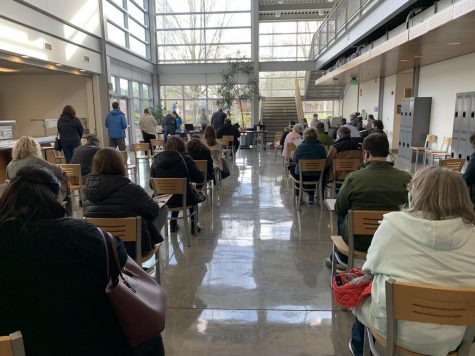
Firefighter and paramedic, Mark Ross, from the Tualatin Valley Fire and Rescue has been helping distribute vaccines to the community.
“I’ve received both doses; I got it as soon as I could,” Ross shared. “As a vaccinator I had to go through six hours of training on these particular vaccines to be able to answer questions.”
Despite the list of side effects, many people don’t face any and have a very simple recovery process. Senior Serena Theodoroff shares her experience about the COVID vaccine experience.
“The process was very organized since I just got to go into my work to get it done,” Theodoroff said. “I simply signed some papers then went to the time slot for employees, and it was a super quick process!”
Theodoroff works at the Bonaventure of Tigard, an assisted senior living facility, where most residents are at high risk, making COVID very dangerous to them.
She has received both doses of the Pfizer vaccine. Theodoroff only faced a sore arm after her first dose; however, the second was a little more difficult.
“My whole body ached, my head hurt and I was so tired I could barely get up until I ate a little food,” she explained. “Throughout the day it got less and less bad, and since I took Ibuprofen and rested, I felt normal the next day.”
Reese shares his experience after receiving his first dose of the Pfizer vaccine.
“Overall it was painless but my arm did hurt for a couple days,” he said. Reese will be receiving his second dose on Monday, March 15.
“I just hope people will take up the opportunity to get vaccinated, that way we can develop vaccines for the other variants,” Reese concluded.
Ross claims that being able to administer the community vaccines has been one of the most rewarding experiences during his career.
“People are so excited to get this shot; they’re really happy about it and it makes me happy,” he said. “Everybody knows that they’re contributing to solving a big problem by working together, and it’s just as rewarding as anything else I’ve done in the fire service.”
More and more places around Tigard like; Rite Aid, Costco, Walmart, Walgreens, Fred Meyer and Safeway pharmacies, are now distributing the vaccine. Students can book their appointments now!


